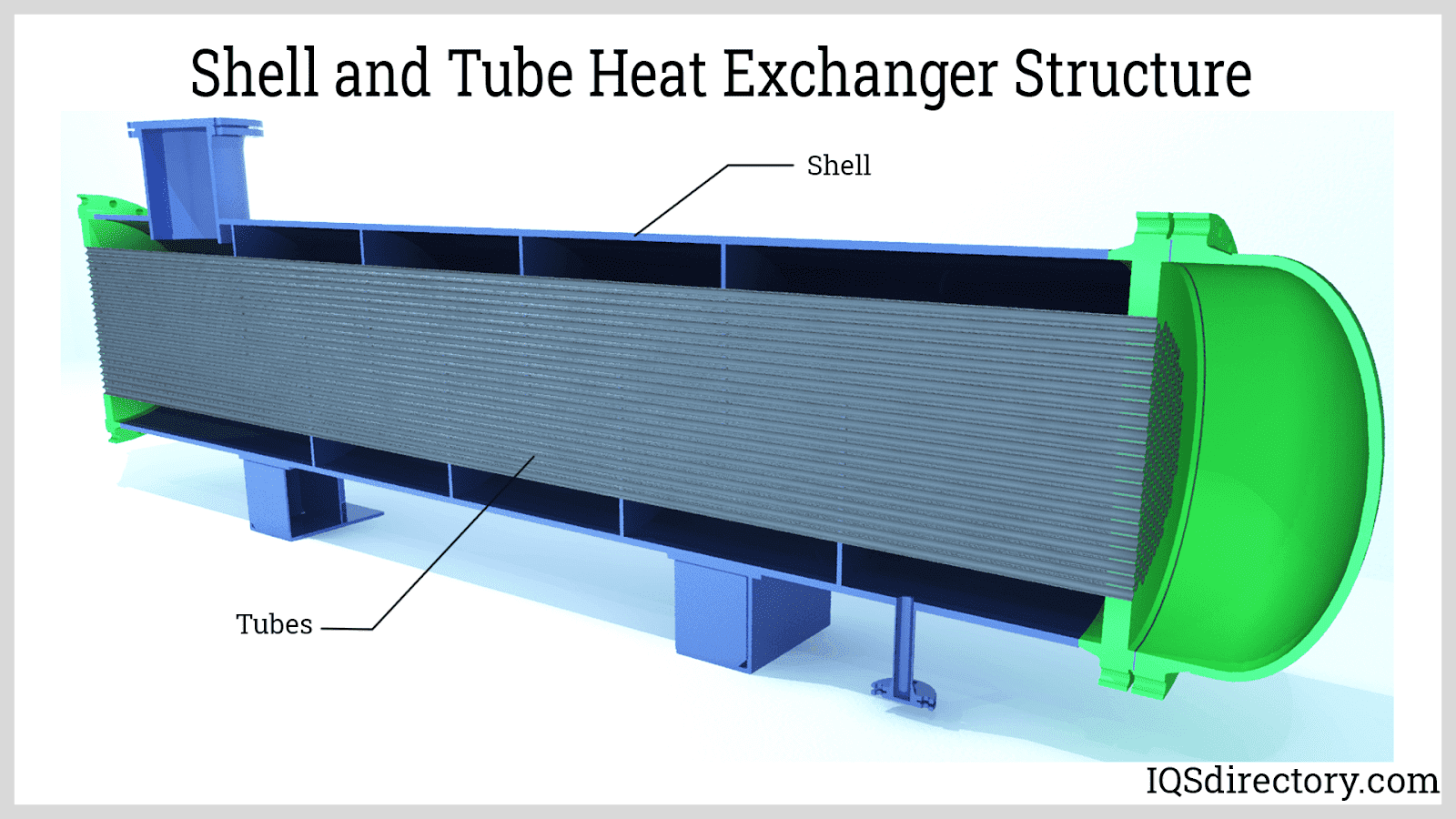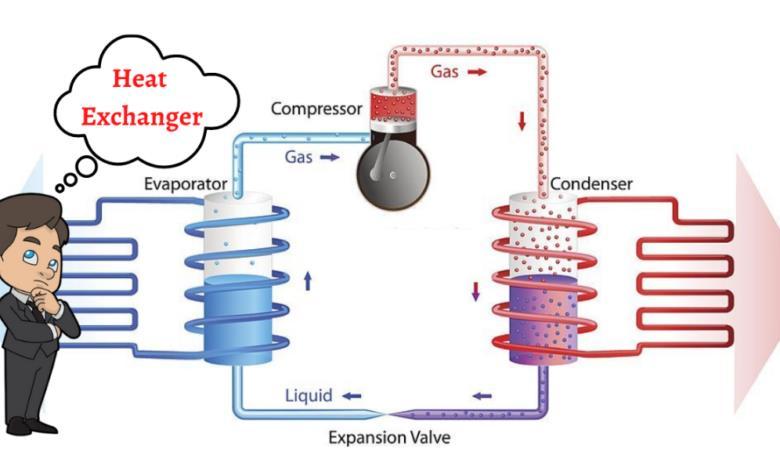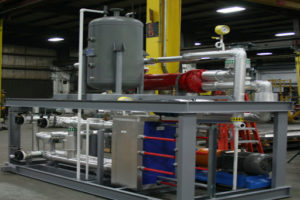A Comprehensive Guide to Choosing the Right Heat Transfer Equipments for Your Needs
Selecting the appropriate Heat transfer system is necessary for operational performance. Various systems satisfy different requirements, influenced by elements such as temperature variety and liquid kind. Comprehending the concepts behind Heat transfer, such as conduction, convection, and radiation, is essential. Furthermore, examining power resources and maintenance practices can impact long-term efficiency. A closer evaluation of these considerations reveals exactly how to tailor a system to particular requirements. What should one prioritize in this complicated decision-making procedure?
Comprehending Heat Transfer: Trick Principles and Concepts
Although Heat transfer might look like a simple principle, it includes a variety of principles that are basic for effective system design. Understanding these concepts is vital for designers and developers who aim to maximize thermal performance in various applications. Conduction, as an example, includes the transfer of Heat with solid materials, while convection refers to the motion of Heat within liquids. Radiation, an additional vital concept, defines how Heat can be transferred with electro-magnetic waves. Each of these devices plays an essential role in establishing exactly how energy moves within a system. By completely understanding these concepts, professionals can make enlightened decisions, guaranteeing that Heat transfer systems operate successfully and fulfill the details needs of their applications
Types of Heat Transfer Equipments: A Review
Comprehending the principles of Heat transfer lays the foundation for checking out the different types of Heat transfer systems readily available. Heat transfer systems can be categorized primarily right into 3 types: radiation, conduction, and convection. Conduction includes Heat transfer through strong materials, depending on direct contact in between bits. Convection, on the other hand, happens in fluids (fluids and gases) where the activity of the fluid itself helps with Heat transfer. Radiation includes the transfer of Heat with electromagnetic waves and does not need a tool, permitting it to happen in a vacuum cleaner. Each kind of system has unique qualities and applications, making it crucial for people and organizations to thoroughly evaluate their specific demands when selecting the most appropriate Heat transfer solution.
Applications of Heat Transfer Equipments in Numerous Industries
Heat transfer systems play a necessary function across numerous sectors, affecting performance and product top quality. In industrial production processes, they assist in precise temperature control, while in food and beverage handling, they assure safety and security and conservation. Furthermore, HVAC and environment control systems count heavily on effective Heat transfer to keep comfortable atmospheres.
Industrial Production Processes

Various industrial manufacturing processes depend greatly on effective Heat transfer systems to optimize performance and enhance item high quality. In fields such as metalworking, Heat exchangers play an important role in keeping optimal temperature levels throughout welding, spreading, and creating. These systems ensure consistent Heat distribution, which is vital for attaining desired material homes. Likewise, in the chemical manufacturing industry, Heat transfer systems assist in specific temperature level control during reactions, impacting yield and security. Moreover, in textile manufacturing, reliable Heat monitoring is necessary for coloring and ending up processes, affecting color consistency and textile top quality. By choosing suitable Heat transfer modern technologies, producers can boost power effectiveness and reduce functional costs, eventually leading to a more affordable and lasting production atmosphere.
Food and Beverage Handling
Effective Heat transfer systems are just as vital in the food and beverage processing market, where keeping suitable temperature levels is critical for food security and high quality. These systems play an essential duty in procedures such as sterilization, food preparation, and pasteurization, guaranteeing that items are risk-free for consumption and preserve their dietary value. Heat exchangers, as an example, efficiently transfer Heat between fluids, maximizing energy usage while decreasing temperature level changes. Furthermore, refrigeration systems are essential for expanding and protecting perishable products shelf life. The selection of Heat transfer modern technology straight influences functional performance and product stability, making it imperative for food and drink producers to select the ideal systems customized to their particular processing demands. This cautious choice ultimately contributes to customer complete satisfaction and food safety.

A/c and Climate Control
While numerous industries depend on Heat transfer systems for efficiency, HVAC (Heating, Air Flow, and A/c) look at this now plays a necessary role in maintaining indoor climate control throughout numerous setups. These systems make use of Heat transfer concepts to control temperature, air, and humidity high quality, making sure comfort and safety and security in property, commercial, and commercial environments. Correctly developed a/c systems enhance energy effectiveness, lower operational costs, and lessen ecological influence. In business structures, for instance, efficient environment control contributes to employee efficiency and consumer contentment. In industrial applications, a/c systems aid preserve ideal conditions for equipment operation and item conservation. Picking the appropriate Heat transfer system is crucial for conference details environment control needs and accomplishing general system performance.
Assessing Energy Sources for Heat Transfer Systems
In reviewing power resources for Heat transfer systems, a comparison of renewable resource choices and fossil gas factors to consider is important. Renewable sources, such as solar and wind, offer sustainable choices that can minimize environmental impact. On the other hand, nonrenewable fuel sources stay common due to their recognized framework and power density, motivating a mindful analysis of both choices.
Renewable Power Options

Fossil Gas Factors To Consider
Examining fossil fuel considerations is important for the effectiveness and sustainability of Heat transfer systems. Nonrenewable fuel sources, such as gas, oil, and coal, are standard power sources that offer significant Heat output, making them prominent choices for residential and commercial applications. Their environmental impact, including greenhouse gas exhausts and source deficiency, elevates issues. When selecting a i was reading this heat transfer system, it is crucial to analyze the schedule, cost, and regulatory variables related to these fuels. Furthermore, the effectiveness of nonrenewable fuel source systems have to be thought about, as higher performance can mitigate some ecological disadvantages. Eventually, a well balanced approach evaluating performance and sustainability can direct decision-makers towards one of the most proper Heat transfer remedy for their specific needs.
Elements to Take Into Consideration When Selecting a Warmth Transfer System
Choosing a suitable Heat transfer system needs mindful factor to consider of different aspects that can considerably influence efficiency and efficiency. One vital element is the operating temperature variety, which dictates the products and layout ideal for the application. In addition, the kind of liquid utilized in the system-- whether gas or fluid-- impacts Heat transfer effectiveness and compatibility. The system's size and capacity need to line up with the details needs of the operation to avoid inadequacies. Power resource accessibility is likewise essential, affecting operating costs and sustainability. Moreover, the installment setting, including space constraints and access for upkeep, plays a considerable duty in system option. Regulatory conformity and safety criteria have to be thought about to ensure the system meets all lawful requirements.
Upkeep and Performance Optimization for Heat Transfer Solutions
Preserving Heat transfer systems is important for making certain maximum performance and durability. Normal upkeep activities, such as cleaning up Heat exchangers and examining insulation, aid prevent performance losses due to fouling and thermal linking. In addition, checking system specifications, including pressure and temperature level, permits for very early discovery of anomalies, minimizing downtime and expensive repair services. Applying a preventative upkeep routine can maximize performance and extend the life expectancy of components. Updating to innovative control systems can enhance operational effectiveness by changing to varying problems and lots. By prioritizing maintenance and performance optimization, operators can attain decreased energy usage, reduced operational prices, and boosted overall system dependability, inevitably resulting in better source utilization and a more sustainable procedure.
Future Fads in Heat Transfer Technologies
As sectors increasingly focus on sustainability and power performance, future fads in Heat transfer modern technologies are readied to undertake significant improvements. Advancements such as innovative materials, including carbon nanotubes and nanofluids, promise improved thermal conductivity and efficiency. Furthermore, the assimilation of renewable energy resources into Heat transfer systems is getting energy, advertising green remedies. Smart technologies, including IoT sensors, are expected to revolutionize tracking and control, allowing real-time information analysis for enhanced performance. The development of modular and small systems will promote less complicated installment and maintenance, providing to varied applications. These developments show a shift in the direction of more sustainable, efficient, and versatile Heat transfer services, straightening with international energy goals and environmental standards.
Frequently Asked Concerns
What Are the Environmental Effects of Heat Transfer Solutions?
The ecological impacts of Heat transfer systems can include greenhouse gas emissions, power consumption, and potential thermal air pollution. Additionally, incorrect disposal of inadequacies and materials can add to resource deficiency and ecological community disruption.
Exactly how Do I Compute the Cost-Effectiveness of a Heat Transfer System?
To calculate the cost-effectiveness of a heat transfer system, one need to examine preliminary prices, operational expenditures, upkeep demands, and power effectiveness, comparing these elements versus the expected life-span and efficiency of the system.
Can Heat Transfer Solution Be Utilized in Residential Setups?
Heat transfer systems can undoubtedly be made use of in residential setups. They give efficient heating and cooling services, making homes much more comfortable while possibly lowering energy expenses. Their flexibility permits various applications in domestic atmospheres.
What Security Rules Put On Heat Transfer Systems?
Safety and security policies for Heat transfer systems commonly consist of guidelines on setup, maintenance, and operation. Conformity with neighborhood building ordinance, supplier specs, and sector requirements is vital to ensure safe and efficient system efficiency in various applications.
Exactly How Do Different Materials Affect Heat Transfer Efficiency?

Conduction, for instance, includes the transfer of Heat through solid materials, while convection refers to the motion of Heat within fluids. Comprehending the principles of Heat transfer lays the groundwork for exploring the different kinds of Heat transfer systems offered. Heat exchangers, for circumstances, successfully transfer Heat in between liquids, maximizing power usage while minimizing temperature level fluctuations. In assessing power sources for Heat transfer systems, a contrast of sustainable energy alternatives and fossil gas considerations is crucial. Metals, such as copper and light weight aluminum, conduct Heat successfully, whereas insulators like rubber and glass reduce down Heat flow.